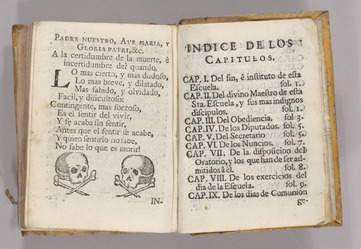Are Innovation and Tradition Compatible?
May 26, 2016 • By Matthew O'Hara
Are innovation and tradition compatible?
In contemporary usage, the answer seems straightforward: No.
To describe something or someone as innovative almost always implies a great rupture with the past. The term "disruption," the word-of-the-moment in Silicon Valley—considered by many to be the epicenter of economic innovation (and not far from where I live and teach)—emphasizes intense alteration. In this world, "to disrupt" means to enact radical change. Indeed, innovation seems to be measured by the degree to which it breaks from tradition.
We don't have to look far for examples. The well-known technology conference TechCrunch Disrupt bills itself as a springboard for "revolutionary startups" and "game-changing technologies." Disruption, in the future-oriented world of Silicon Valley, means leaving the past in the past. It is understood to be an unalloyed good.
Yet it turns out that innovation and tradition have often been quite compatible. Indeed, many historical examples suggest that innovation is not only complimentary to tradition, but in fact requires it.
Even in Silicon Valley, if one strips away the posturing of technologists and the marketing of their firms, it is clear that past, present, and future interact in more subtle and complex ways than "disruption" might imply. Steve Jobs, while usually held up as the paradigmatic disruptor, was famous for his obsession with product evolution, adaptation, and iterative change.
Moving beyond the rhetoric of contemporary innovation is important, for it raises a set of questions that are at the heart of The Enhancing Life Project: Namely, what are the cultural and intellectual resources available for making our futures? What are the tools that we can use to navigate the present and create new futures? How have such problems been answered in diverse cultures, times, and places?
My project probes these questions through historical case studies in a place and time not known for innovation: colonial Mexico. Over the course of a five-chapter book, I will examine how individuals thought about, planned for, and manipulated a future full of uncertainty and risk. Based primarily on archival materials, I consider a range of practices, from topics that we usually associate with religious studies (prayer, divination, preaching) to others that are typically the domain of economic historians (credit, futures markets, price theory). By bringing together these diverse activities I'm focusing attention on the problems of time experience, future imaginaries, and the human urge to enhance life.

While my research is ongoing, the early findings are intriguing. Colonial Mexico developed a culture of innovation, human aspiration, and future-making that was subsequently forgotten in part because it did not fit with later definitions of modernity and innovation as secular phenomena. When we begin to look in unexpected places, examples of futuremaking abound. A shift towards empiricism developed as much from the market for astrology as it did from the ideas of the scientific revolution. Preachers stoked political imaginaries by reading the future through biblical exemplars. Farmers and traders used a sophisticated understanding of theology to demand new types of financial instruments.
So, are innovation and tradition at odds? Sometimes, perhaps. On the other hand, it is hard to imagine changes and "disruptions" so absolute that they do not contain some link to the past. Historically speaking, most examples of innovation and creative change included a robust dose of received wisdom, tradition, and custom. Through the lens of history, my project is offering a new perspective on the relationship between innovation and tradition, between future and past, between our need for continuity and our desire for change.
Read a Q&A with Matthew O'Hara about his research here.
Photo courtesy of Matthew O'Hara.